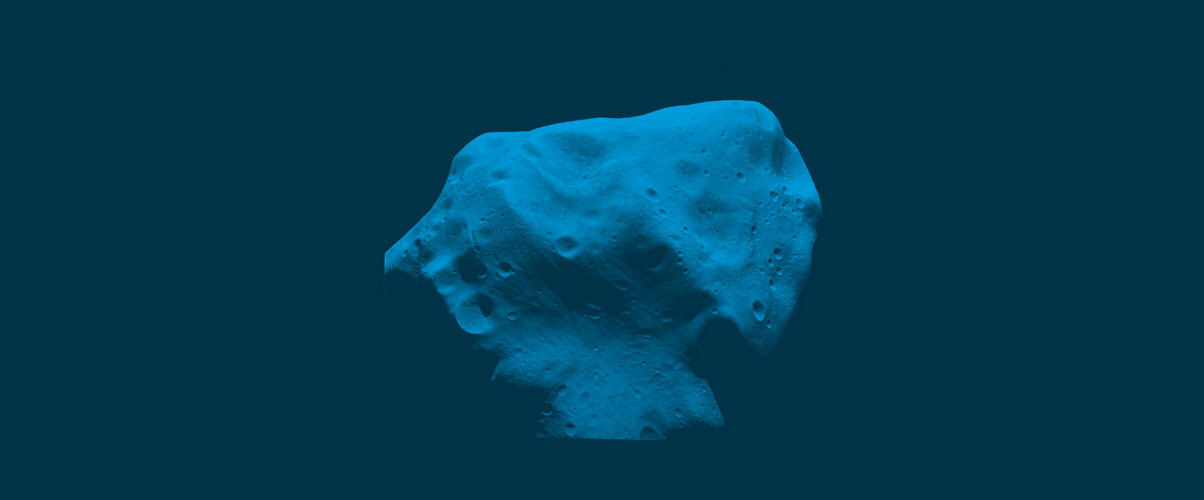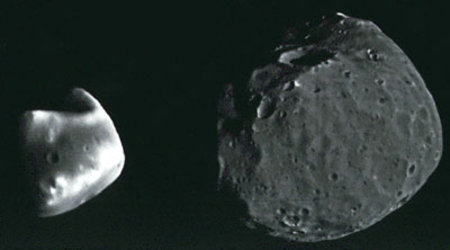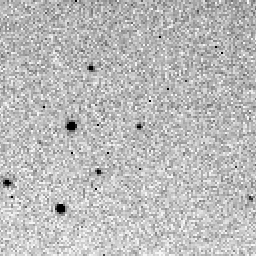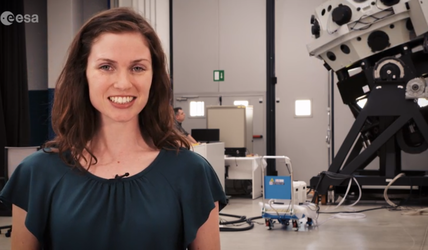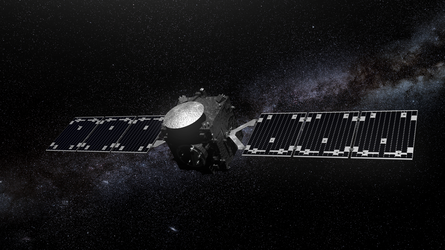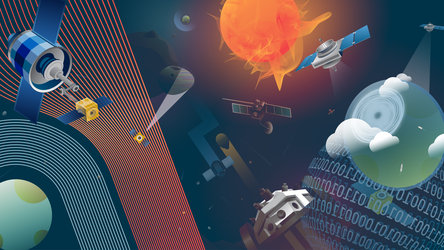100th lunar asteroid collision confirmed by second telescope
Since March 2017, ESA’s NELIOTA project has been regularly looking out for ‘lunar flashes’ on the Moon, to help us better understand the threat posed by small asteroid impacts. The project detects the flash of light produced when an asteroid collides energetically with the lunar surface, and recently recorded its 100th impact. But this time, it was not the only one watching.
Earth is constantly bombarded by natural space debris – fragments of comets and asteroids, also known as meteoroids. The majority burn up in our atmosphere, but some objects, particularly those larger than a few metres, are potentially dangerous and their number is not well known.

Smaller Earth impactors are too small to be detected directly with telescopes and too unpredictable to be captured reliably with ground-based ‘fireball’ cameras. Instead, to get an idea of how common these objects are and their potential threat to Earth, we look to the Moon.
The Moon’s atmosphere is negligible, with a total mass of less than 10 tonnes. As such, even tiny asteroids travelling at fast speeds leave an impact – as illustrated by its heavily cratered surface.
When meteoroids or small asteroids strike the lunar surface at high speed, they generate a flash of light that, if bright enough, is visible from Earth. Scientists can use the brightness of a flash to estimate the size and mass of the object that caused it, and improve our understanding of how often similar objects are colliding with Earth. Typically, asteroids weighing less than 100 g and measuring less than 5 cm create these observable lunar flashes.
NELIOTA
The Near-Earth object Lunar Impacts and Optical TrAnsients (NELIOTA) project looks for flashes where they are easiest to observe, on the dark side of the moon not illuminated by the sun.

NELIOTA is funded by ESA and operated by the National Observatory of Athens at Kryoneri Observatory in Greece. It uses a 1.2 m telescope and a twin-camera system that splits the light of the lunar flash into two colours. This helps scientists to estimate another important feature of an impact, its temperature.
Since the project began, it has conducted a total of approximately 149 hours of lunar monitoring and detected 102 lunar flashes.
A second opinion
The NELIOTA project is not alone in its hunt for lunar flashes. Its 100th detection not only marked an impressive milestone for the project, but was also the first time that one of its detections was confirmed by another observatory.

Using a 35 cm telescope, a newly established team at the Sharjah Lunar Impact Observatory (SLIO) of the Sharjah Academy for Astronomy, Space Sciences & Technology, UAE, detected a flash on 1 March 2020. It was later confirmed that this flash was from the same event as the 100th NELIOTA detection.
“Cross detections like this are very useful as they rule out the possibility of a slow, bright satellite being misidentified as an impact flash,” says Detlef Koschny, co-manager of the Planetary Defence Office of ESA's Space Safety programme. “While NELIOTA has other, less direct means of excluding such events, we’re excited to have more eyes on the Moon, helping us to understand the rocky road our planet travels on”.
Observing the same suspected lunar impact event from different locations is a very effective way to spot this type of false detection. Other lunar impact flash observers can cross-check their data with that of NELIOTA - all flashes detected by the system are posted on the NELIOTA website within 24 hours.















 Germany
Germany
 Austria
Austria
 Belgium
Belgium
 Denmark
Denmark
 Spain
Spain
 Estonia
Estonia
 Finland
Finland
 France
France
 Greece
Greece
 Hungary
Hungary
 Ireland
Ireland
 Italy
Italy
 Luxembourg
Luxembourg
 Norway
Norway
 The Netherlands
The Netherlands
 Poland
Poland
 Portugal
Portugal
 Czechia
Czechia
 Romania
Romania
 United Kingdom
United Kingdom
 Slovenia
Slovenia
 Sweden
Sweden
 Switzerland
Switzerland



























